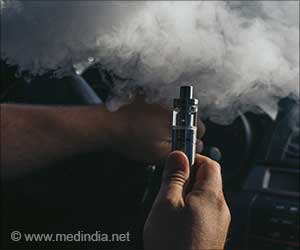Illicit drug manufacturers pollute environment for generations, warn Australian researchers.

The places where the drugs are ‘cooked’ – usually rental houses or flats – can become contaminated with volatile chemicals that may endanger the health of subsequent residents, who may be completely unaware their home has been used as a drug factory.
“In New Zealand, they have recently torn down several houses where drugs were made because they were so polluted it would be hazardous for anyone to live there afterwards.
“So this is also a serious issue for landlords, who can find themselves facing legal action, clean-up costs of $150,000 or more, a huge drop in property values or even their building being razed to the ground, as a result of an activity which they knew nothing about,” the duo noted
Since the toxic cycle depends on the demand created by recreational drug consumers, there needs to be much greater public education about these damaging ‘side-effects’ of what many regard as a private and relatively harmless activity.
“The issue is similar to video piracy, where young people do not think about the wider consequences of their personal actions. However in this case it can cost someone else their health and even their life.”
Advertisement
The volatile toxic chemicals used in making drugs do not disappear when drug-making ceases on site. They find their way into soil, air and water; however, not enough research has yet been done into this problem to accurately assess the wider impact on community or environmental health, Professors Naidu and Mallavarapu caution.
Advertisement
“Primary contaminants of concern from these drug labs include known carcinogens like benzenes, and other toxins such as methylene chloride, trichloroethane and toluene.”
“Individuals who are exposed to drug lab contamination may experience dizziness, headaches and reactions, chemical burns, lung damage, and nerve damage,” he adds.
The most at-risk populations are drug ‘cooks’, and subsequent residents or neighbours of labs – but police, fire fighters, environmental inspectors and other public servants may also be exposed.
The researchers have investigated the potential for the drugs to leach into the ecosystem and found that the chemicals and their byproducts can persist in the environment for many years, posing a continuing hazard to water quality and wildlife.
“Where this occurs, it means that people living on the site or nearby may be exposed over a number of years and there needs to be further research into bioaccumulation to assess the risk,” says Prof. Naidu.
“Preventing clandestine drug manufacturers from dumping their wastes is a challenging task given the extreme secrecy under which these labs operate. Effective legislation and tougher penalties for the ‘cooks’ may help to reduce the number of illicit labs in operation, but it would also help if young people who buy these drugs were more aware of their impact on others and on the environment.”
The researchers add that the ability of scientists to chemically ‘fingerprint’ different drug-making operations are making it easier to nail the culprits, as they themselves will be contaminated by their own distinctive brew.
Source-Medindia










